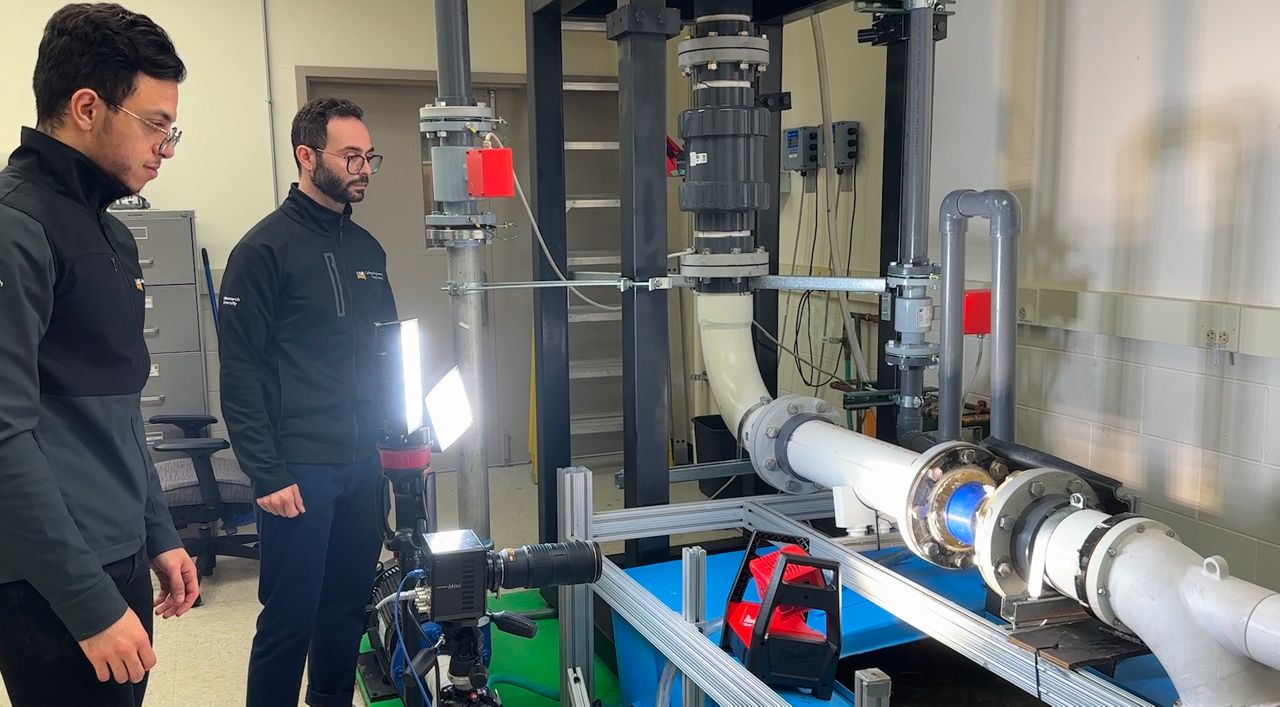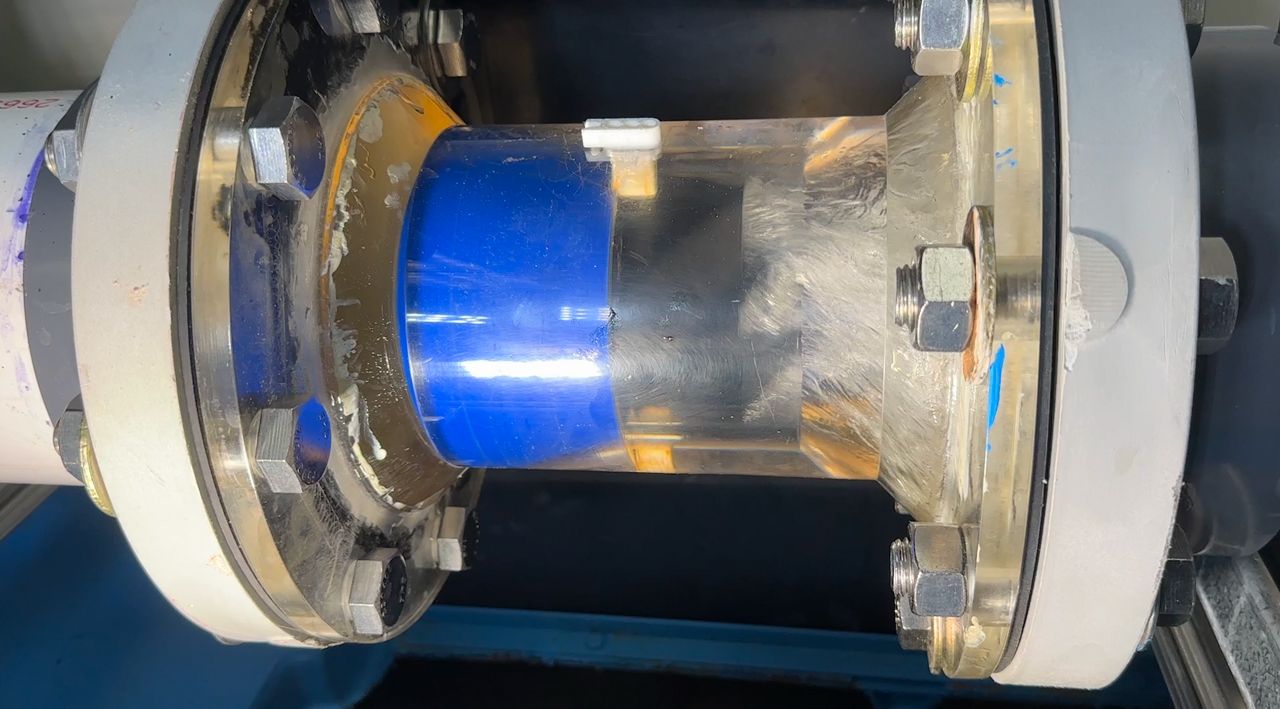MILWAUKEE — Researchers at the University of Wisconsin-Milwaukee (UWM) are trying to boost hydropower efficiency by solving a phenomenon called cavitation.
Inside UWM’s University Services and Research Building, Kada Kada tests their hydroturbine. He is pursuing his Ph.D. in mechanical engineering.
After pulling the valve, the water is forced from the reservoir, through the pipe and into the turbine. This causes cavitation, which creates bubbles.
“When we have this difference in pressure, it moves from a liquid state to a vapor state because of the difference in the velocity, which means a difference in the pressure,” said Kada.
Kada said it leads to several problems.

“The first one is reduced efficiency. The second one is reduced live span because of the small explosion of the bubbles. The third one creates vibrations because of the non-homogeneous of our fluid, and the last one is that it creates a lot of noise,” said Kada.
Ahmad Abel Hadi is a Postdoctoral Researcher. To solve cavitation, Abel Hadi injects air into the hydro turbine.
He said the goal is to keep the pressure high as the water passes through it.
“When you limit this cavitation or you limit the bubbles hitting the blades of the turbine, you are reducing the noise,” said Abel Hadi. “You are reducing the vibration and so much energy lost to this kind of vibration and corrosion is going to be reduced.”
Asma Khasawneh is a mechanical engineering student. She said a high-speed camera has been set up to capture how much cavitation is happening.
“We analyze or measure the volume of these bubbles, which is the main indicator for the analysis,” said Khasawneh.

Ryo Amano, Director of UW-Milwaukee’s Industrial Assessment Center, oversees research of renewable energy at the university. Amano said he believes hydropower would be particularly important for Wisconsin.
“The Department of Renewable Energy is really pushing this type of renewable energy particularly in Wisconsin because we have lots of rivers and dams and falls,” said Amano. “Currently as far as I know, there are 25 power stations throughout Wisconsin, and approximately 85,000 houses can be supplied by one of these units, so it is a very efficient way.”
In addition to air injection, the group also uses different blade designs to reduce cavitation.
“We cannot delete cavitation, but we are doing our best to minimize this phenomenon as we can to enhance the efficiency of our turbines to create more clean and renewable energy,” said Kada.
For these three, this experiment represents an opportunity to impact how renewable energy will be used in the future.



